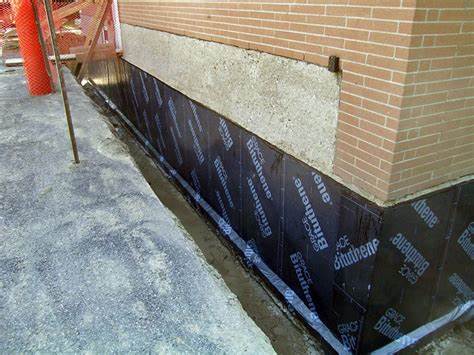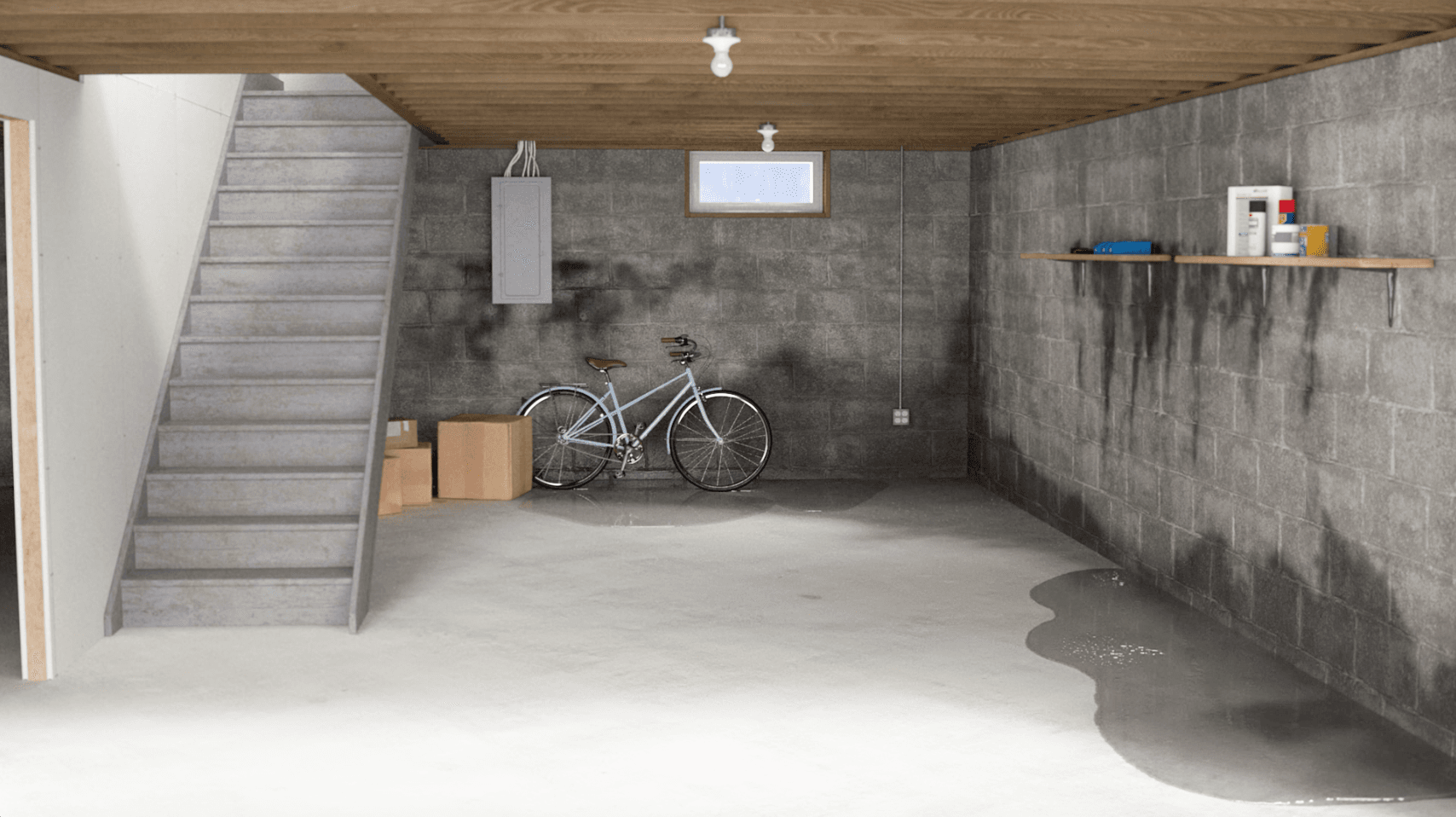Comprehending the Significance of Foundation Waterproofing for Long-Lasting Structural Integrity
In the realm of home upkeep, foundation waterproofing stands as an essential variable in protecting architectural integrity. While commonly ignored, the risks presented by water invasion can result in comprehensive and expensive damages that threatens the really structure of a building. Comprehending the subtleties of waterproofing can expose exactly how it functions as a vital defense reaction against these hazards. Nonetheless, the benefits expand beyond mere defense, influencing aspects such as residential or commercial property value and indoor health. What techniques efficiently avoid such concerns, and how does one ensure the ideal choices are made? These inquiries welcome a much deeper exam.
Threats of Water Invasion
Water breach's effect on a structure can be significant, leading to a host of possible problems that jeopardize the honesty of a building's structure. As wetness seeps right into the structure, it can compromise the architectural components, resulting in cracks and disintegration over time.
Moreover, water invasion can add to the wear and tear of building materials. Concrete, stonework, and wood are especially vulnerable to water damages, with prolonged exposure possibly creating them to rot, rust, or fall apart. Such deterioration not only affects the structural soundness however also drops the building's value. Furthermore, water intrusion frequently brings about raised humidity levels within the structure, which can influence electrical systems and various other infrastructure.
An additional substantial danger linked with water intrusion is dirt instability. Excess moisture can change the make-up of the soil bordering the structure, resulting in uneven settling and more structural damage - Leaky basement Toronto. Promptly resolving water invasion is essential to preserving the longevity and security of any kind of structure

Benefits of Waterproofing
Applying structure waterproofing is a crucial action in protecting a structure from the damaging impacts of water invasion. Among the primary benefits of waterproofing is the preservation of structural stability. Water seepage can deteriorate the structure, leading to splits, deteriorating the total framework, and possibly leading to expensive repairs. By creating an obstacle versus dampness, waterproofing assists keep the foundation's toughness and toughness over time.
Furthermore, waterproofing considerably improves indoor air quality. Dampness infiltration can foster mold and mildew growth, which not only harms structure materials but likewise presents health threats to residents. A properly waterproofed structure lessens these dangers, adding to a much healthier interior atmosphere.
Additionally, waterproofing enhances building worth. A well-protected foundation is an eye-catching function for possible customers, as it shows positive maintenance and reduces the possibility of future architectural issues. This financial investment not just safeguards the current state of the building but also adds long-lasting value.
Last but not least, foundation waterproofing adds to energy efficiency. By stopping wetness from getting in the structure, it assists in preserving consistent interior temperatures, thus minimizing the need for extreme heating or air conditioning and bring about energy financial savings.
Typical Waterproofing Approaches
When it comes to protecting a structure's foundation, selecting the proper waterproofing approach is important for effective security against dampness intrusion. Various techniques are employed based upon the specific needs and conditions of the framework. Among the most typical approaches is the application of liquid waterproofing membrane layers. These membrane layers, usually made from polymers, are used as a fluid to create a seamless, long lasting barrier versus water infiltration.
One more widespread check this technique is the installment of sheet membrane layers, which are pre-formed sheets of water-proof material, often bitumen or polyvinyl chloride (PVC), that are stuck to the foundation walls. These sheets provide robust protection and are specifically efficient in areas with high groundwater degrees.
Cementitious waterproofing is another widely-used remedy, particularly in new buildings. This includes using a cement-based substance mixed with additives to produce a water-proof finish. It is very easy to use and affordable, making it a preferred option for domestic buildings.

Signs of Structure Damages
To maintain the stability of a structure's structure, identifying the signs of prospective damage is as crucial as selecting the proper waterproofing methods. Timely recognition of these indications can avoid expensive fixings and ensure lasting structural stability. One of one of the most evident indicators of structure damages is the look of splits in the walls, floors, or structure itself. These can differ in shapes and size, yet horizontal or stair-step cracks commonly recommend considerable architectural issues.
Unequal floors are an additional usual sign, generally brought on by the settling or moving of the structure. Homeowners may likewise see windows and doors becoming difficult to close or open, showing potential imbalance as a result of structure motion. Water breach indicators, such as dampness, mold, or mold in the basement, suggest insufficient waterproofing or drain issues, which can worsen foundation troubles.

Selecting the Right Specialist
Selecting the ideal service provider is vital for guaranteeing effective structure waterproofing tasks. Begin by investigating prospective specialists with a tested track record in visit this web-site structure waterproofing.
It is vital to obtain several estimates to contrast rates and range of work used by each specialist. Be mindful of price quotes that are substantially lower than others, as this might suggest below average products or handiwork.
During appointments, evaluate their interaction skills and desire to answer inquiries, which are signs of a specialist's dedication to client complete satisfaction. Ensure they provide a detailed contract outlining timelines, expenses, warranties, and materials. Verify their understanding of local building codes and laws to prevent prospective compliance problems. By taking these steps, you can select a contractor that will deliver high quality, long lasting waterproofing services.
Final Thought
Structure waterproofing is important for keeping structural honesty and protecting against potential damages created by water breach. By executing effective waterproofing techniques, the threats of mold and mildew development, material deterioration, and dirt instability are substantially decreased. This conservation not just safeguards the home's worth yet additionally adds to improved interior air high quality and energy performance. Cautious selection of suitable waterproofing strategies and qualified specialists is essential for ensuring long-term defense and longevity of foundational structures.
In the world of building upkeep, structure waterproofing stands as a crucial aspect in safeguarding architectural stability.Carrying out structure waterproofing is an essential step in protecting a structure from the damaging impacts of water intrusion. One of the most apparent signs of structure damage is the appearance of fractures in the walls, floors, or foundation itself. Water intrusion signs, such as wetness, mold, or mold in the cellar, recommend poor waterproofing or drainage issues, which can worsen foundation troubles.
Structure waterproofing is crucial for maintaining architectural honesty and preventing prospective damages caused by water breach. - basement waterproofing Toronto